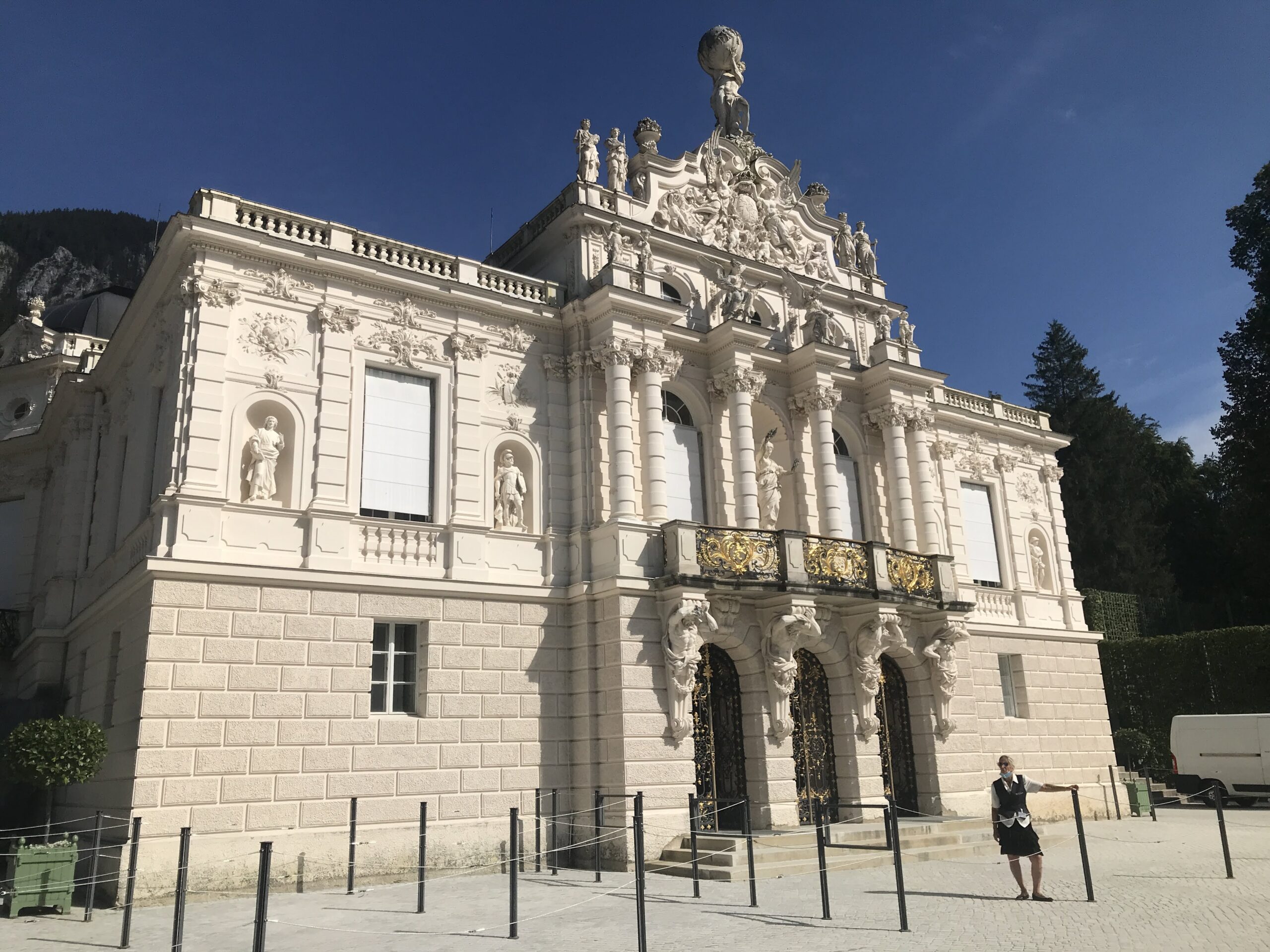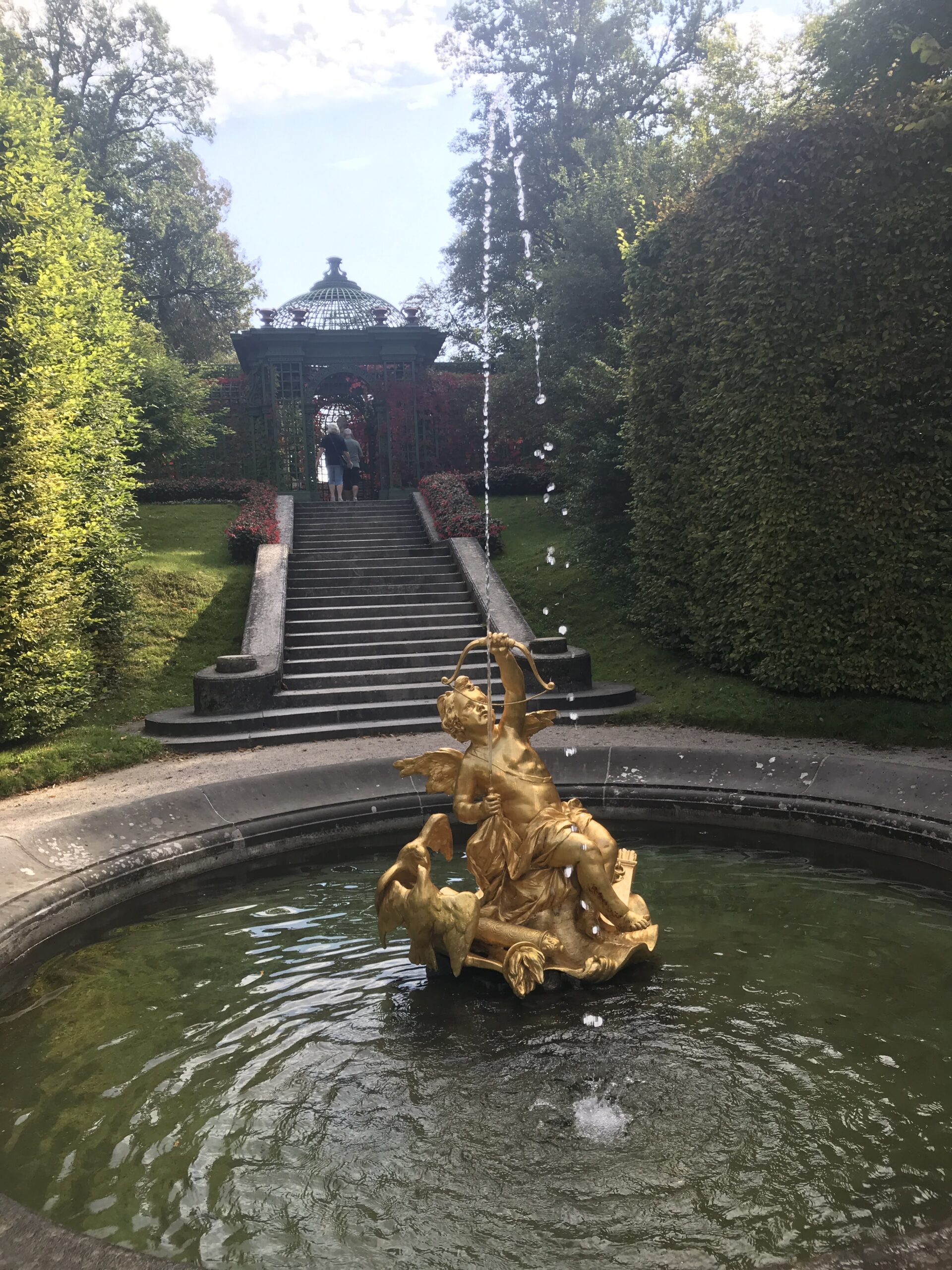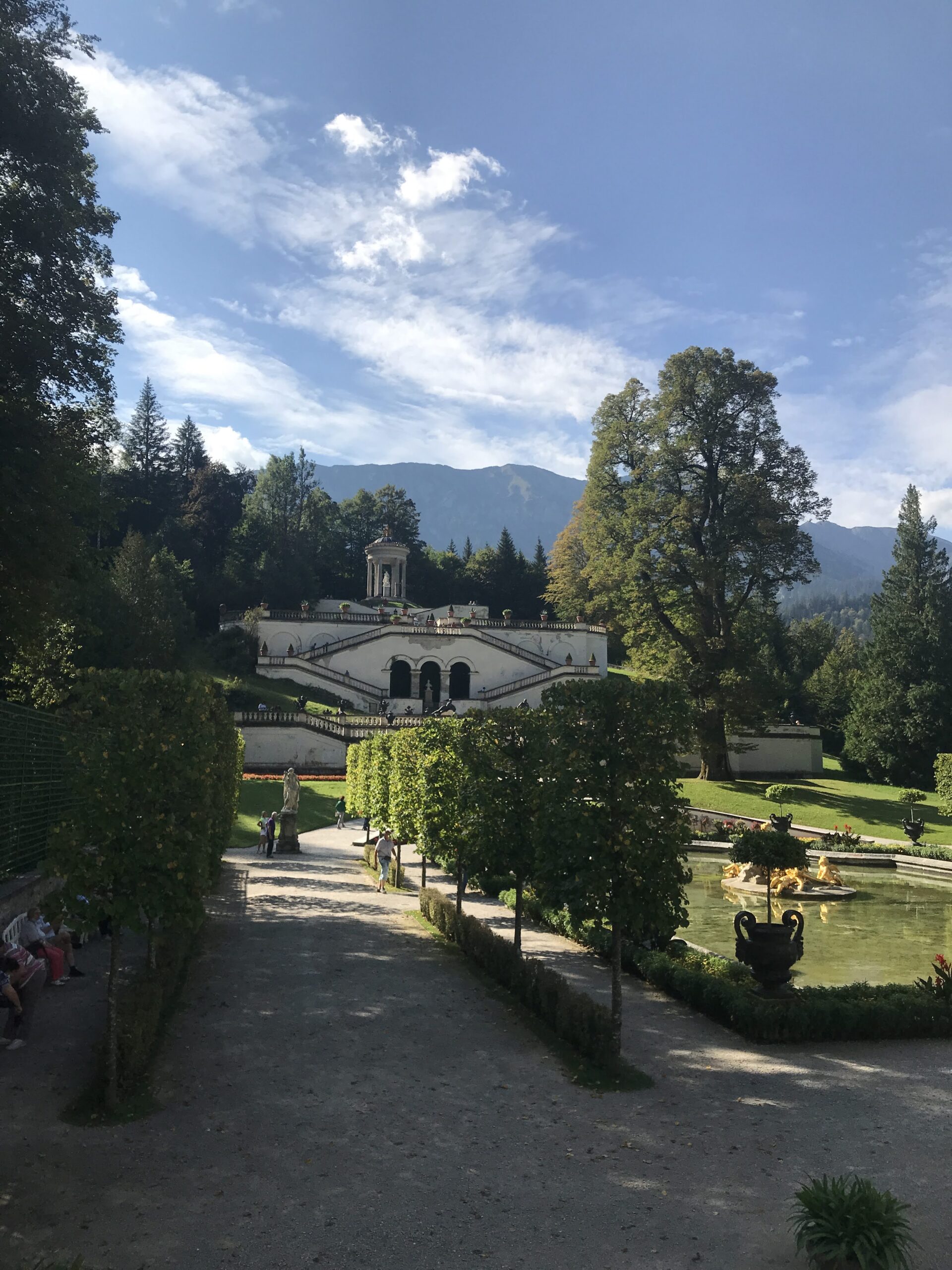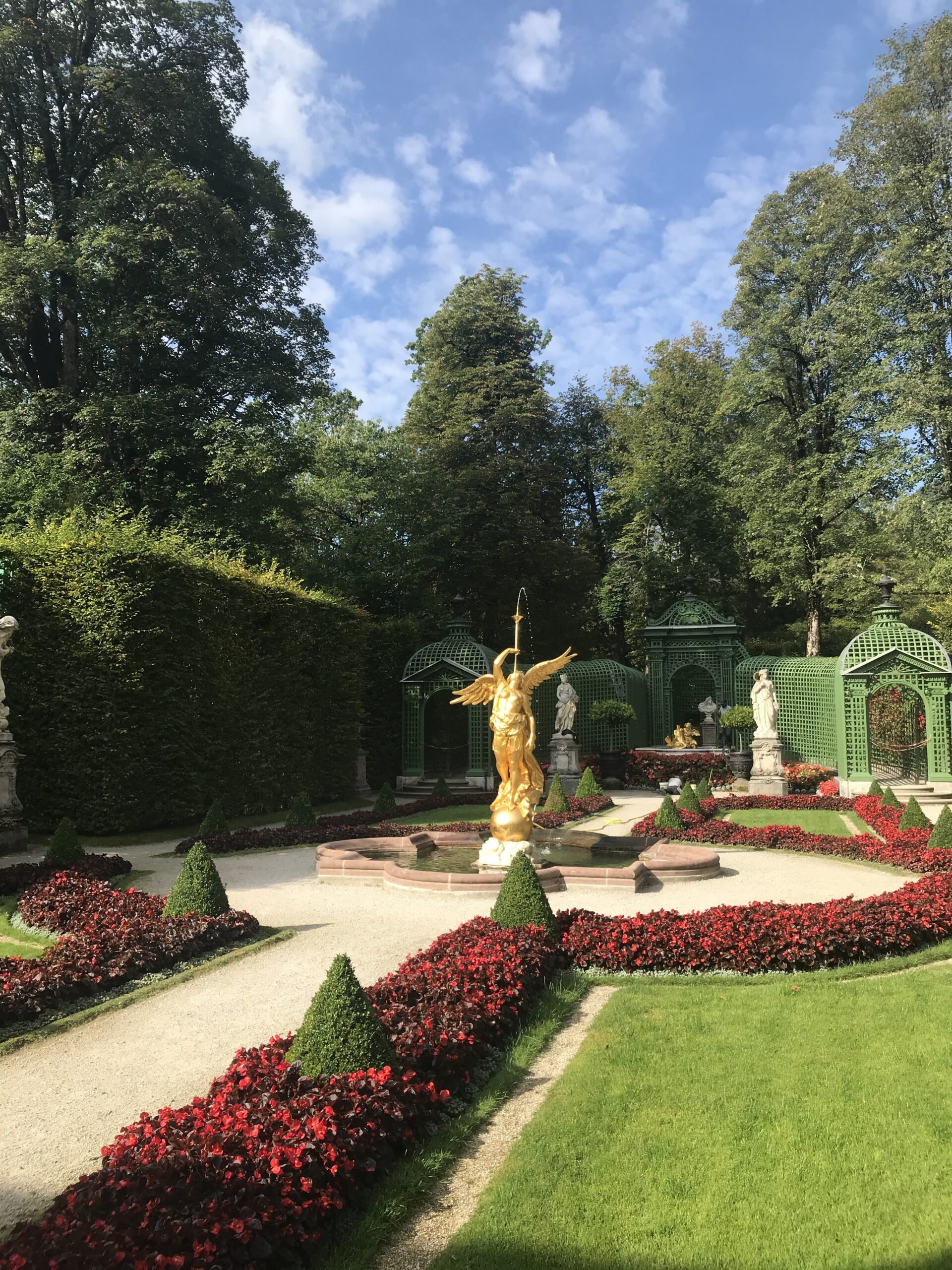The Linderhof Palace was built by King Ludwig II, now located in a national park, tucked away in a mountain valley. It’s a large estate, with mythological elements. To the south of the castle is a sculpture of Venus, along with several giant water fountains, ponds, and terraces. To the north of the castle is a sculpture of Neptun and a giant waterfall. There is a lot to explore on the outside! At the time we visited the castle, a 60 Million Euro renovation was going on to restore a statue and get the waterfall behind the castle working again.
The palace, nicknamed “Little Versailles”, was one of Ludwig II’s various homes. Ludwig was fairly educated and quite inspired by the French. He spoke French just as well as his native language, German. He was inspired by one of the French rulers who had a seemingly unlimited reign, another man named Ludwig. This man was called the sun God because he was quite influential and powerful. Ludwig himself wanted to be like the sun God and have this unlimited power, which led him to put a golden sun in the ceiling of the foyer in inspiration. He additionally had the palace exquisitely decorated with gold, candelabras, mirrors, scrollwork, and the like. Due to such influences, the palace received its nickname.
There was not a bare piece of wall in the castle. Ludwig had golden 3D candelabras with elegant and fine detail, golden paint with scrolls on the walls, and much more. There was so much gold on the walls, it was hard to find an inch of wall not decorated in scrollwork or some type of painting or design. One room, the reading room, had mirrors on every wall, to give the feeling of a never ending space. The reading room still had the bookcase Ludwig II used to hold his collections of translated versions of Edgar Allen Poe and Shakespeare. We learned that Ludwig II wanted to go to the university, but when his dad suddenly died, Ludwig became king. He could no longer study. He continued to be an avid lover of the theatre, and even had a close friendship with Richard Wagner, the composer.
His bedroom was meant to be a receiving room for guests, something that was no longer a tradition of kings in Ludwig’s time of the mid 1800s. He had spent many a time in this room, and decided to have it remodeled, which took 6 years. Unfortunately, there is no mattress in the bedroom, because Ludwig II died before he could move into the bedroom.
He had received several gifts from czars and kings, but never really met any of the people in his own palace. On rare occasions, he would instead go to meet them in a different town. As he got older, he became more and more reclusive. He had this ornately decorated palace, but never really used it to welcome people.
One of the highlights of the palace was the dining table, which was inspired by Marie Antoinette. Marie wanted more privacy from her servants, and therefore requested that her dining table be built as an elevator, where the servants would deck the table and prepare the things below, and then raise the table up to her level. Ludwig II also had the same thing put in his palace.
There are also several other buildings on the grounds, which require a bit of a walk to get to. These include a Morroccan house and the king’s cottage, as well as several others.
Note that it is said that the grounds have a tick problem, so be careful so as not to go wandering off the paths.
It was interesting to see the Linderhof Palace, and the tour of the palace is definitely worth it. Tours are offered in English and German! Make sure to get there early, as we arrived at 10 and got one of the last slots at 11 for a tour. Otherwise we would have had to wait 2 hours!








Comments are closed.